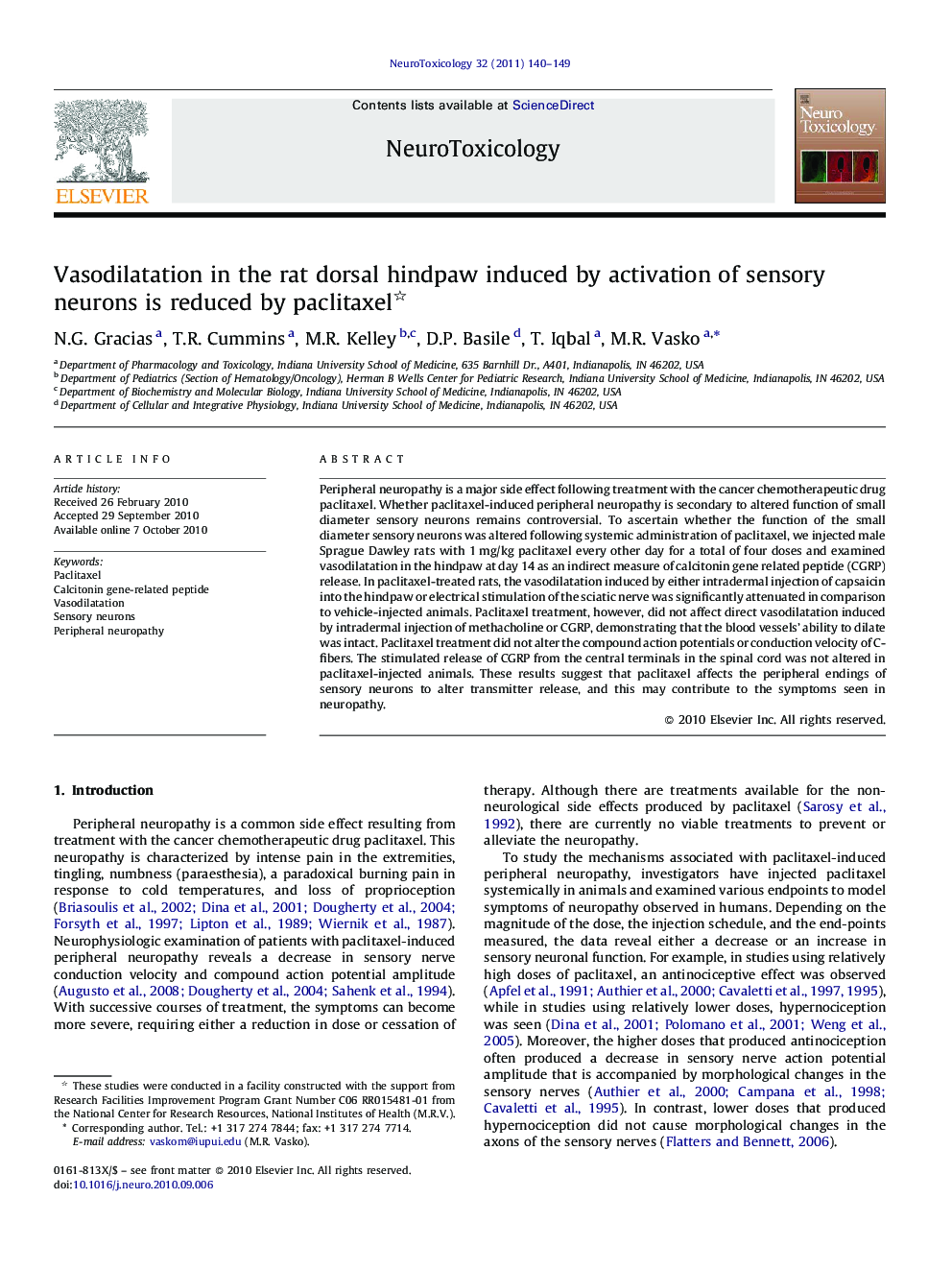| Article ID | Journal | Published Year | Pages | File Type |
|---|---|---|---|---|
| 5855524 | NeuroToxicology | 2011 | 10 Pages |
Peripheral neuropathy is a major side effect following treatment with the cancer chemotherapeutic drug paclitaxel. Whether paclitaxel-induced peripheral neuropathy is secondary to altered function of small diameter sensory neurons remains controversial. To ascertain whether the function of the small diameter sensory neurons was altered following systemic administration of paclitaxel, we injected male Sprague Dawley rats with 1Â mg/kg paclitaxel every other day for a total of four doses and examined vasodilatation in the hindpaw at day 14 as an indirect measure of calcitonin gene related peptide (CGRP) release. In paclitaxel-treated rats, the vasodilatation induced by either intradermal injection of capsaicin into the hindpaw or electrical stimulation of the sciatic nerve was significantly attenuated in comparison to vehicle-injected animals. Paclitaxel treatment, however, did not affect direct vasodilatation induced by intradermal injection of methacholine or CGRP, demonstrating that the blood vessels' ability to dilate was intact. Paclitaxel treatment did not alter the compound action potentials or conduction velocity of C-fibers. The stimulated release of CGRP from the central terminals in the spinal cord was not altered in paclitaxel-injected animals. These results suggest that paclitaxel affects the peripheral endings of sensory neurons to alter transmitter release, and this may contribute to the symptoms seen in neuropathy.
